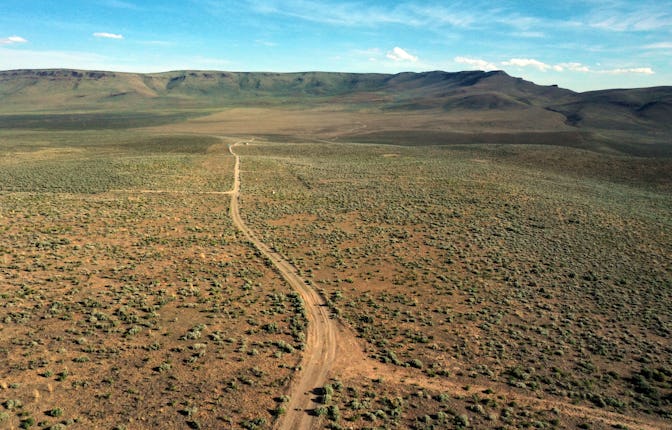Tribal lawyers are fighting a car battery mine that would disrupt sacred land
A proposed lithium mining site in Nevada is on the same land where a horrific massacre took place.

When people think of alternative energy sources like solar power or electric batteries, some of the behind-the-scenes information about how that power is produced gets obscured. With climate disasters looming, people are rushing to clean up some of the world’s biggest polluters: cars. But alternatives like electric batteries present their own concerns, too. In Nevada, tribes are fighting to stop companies from mining for lithium, a material essential to making vehicle batters. Why? Because tribal lawyers say the proposed location is the site of a horrific massacre.
Although electric cars only make up about 3% of all vehicles worldwide, they’re growing in popularity as a green alternative. But if your car is electric, that means it needs a battery to run, and most rely on lithium-ion batteries. And one of the biggest problems facing electric cars now is the process of extracting that lithium. The question isn’t only about whether it’s good for the world, but what the cost is to people to harvest that material — particularly those who’ve already been screwed by this nation repeatedly.
Early next year, the Nevada Lithium Corporation is set to begin mining at Thacker Pass. Per the Associated Press, it’s planned to be the largest lithium mine in the nation, and the biggest open pit lithium mine in the world. In January 2021, former President Donald Trump’s administration rushed to clear any and all red tape facing the project, greenlighting it in his presidency’s final days.
But the mine has face continued pushback from Indigenous people and local environmental organizations. Some have proposed that the fight to stop mining at Thacker Pass may be the next Standing Rock. Unfortunately, that prediction may come true if federal judges ignore a new motion filed in Reno, Nevada, that asks federal Judge Miranda Du to reconsider her previous refusal to block mining.
The new motion shows evidence that dozens of Indigenous people were massacred at the site in 1865, including a newspaper report from that year and two eyewitness accounts of how at least 31 Pauite people, including children, were “murdered by federal soldiers.” According to the Associated Press, this isn’t the first time that Du has heard of the massacre. On Sept. 6, she said that government field notes the tribes, including the Reno-Sparks Indian Colony and the Burns Paiute Tribe of Oregon, submitted “do not show a massacre happened within the project area.”
But with the new evidence, it’s hard to argue that the massacre took place anywhere else. Lawyers for the tribes told the Associated Press, “The proximity of the Indian Lodgings in the project area, combined with the intervening plaintiffs’ oral histories describing how Paiute people, being hunted by the U.S. Cavalry, hid in Thacker Pass, and especially the new accounts of the massacre make it very likely that the Sept. 12, 1865, massacre happened, at least partially, within the project area.”
The article included in the lawsuit is haunting. Published by the Owyhee Avalanche in September 1865, it says a Capt. Payne and Lt. Littlefield of the 1st Nevada Cavalry were out with 19 others along Willow Creek in the area near Thacker Pass. At some point, the story said, “A charge was ordered and each officer and man went for scalps, and fought the scattering devils over several miles of ground for three hours, in which time all were killed that could be found.”
The article echoes what Daranda Hinkey, a 23-year-old member of the Fort McDermitt Paiute and Shoshone Tribe, told The Nation. She recounted that some Pauite people were staying in Thacker Pass, while others hunted in the nearby Paradise Valley. “When the hunters returned,” Hinkey told The Nation, “they found their loved ones murdered, unburied, rotting, and with their entrails spread across the sage brush in a part of the pass shaped like a moon.”
The need to replace fossil fuels is clear. In 2019, fossil fuels accounted for 80% of the U.S.’s total energy consumption, per the Energy Information Association. Cars were long ago pinpointed as a source of the problem: Seven years ago, the Environmental Protection Agency reported that the transportation industry produces about 30% of all U.S. global warming emissions.
However, the threats that climate change produces for the future cannot be used to further harm communities today. If that’s the case, then it opens up a whole lot of questions about who is really the focus in this fight to “save” humanity, and which communities will continue to suffer, regardless of whether the world runs on electric cars or not.